What Camera Did They Use To Film Belly 1998
Over the past few years, more than people than I tin can count have asked me what "the best" film, picture show cameras, lenses, accessories and all manner of other weird and wonderful things to do with film photography are. I take opinions, of course, merely they're very difficult questions to answer because the answers are (nearly) completely subjective.
It struck me, why not do what Hamish Gill did about his near often asked question and write a footling something about it? And then I did.
This picayune serial will eventually embrace the best and worst cameras from each decade roofing the mid-1800s all the way up to the 2010s. I'm starting with the 1990s because information technology feels like an excellent transition point in our recent history: information technology saw the release of some of the most advanced film cameras ever made as well as the offset spits and spurts of mass market digital cameras.
The list follows beneath just please let me a bit of a preamble…
It's no secret to regular readers that I'm a fan of most vintage film cameras – and more than than a few which don't even so deserve that term. The expect, the experience in the hand and the variations and interpretations of solving mutual problems, what'south not to beloved? In that location's beauty almost everywhere only allow's simply say that I'm glad Polaroid's detail vision of future technology below didn't go reality.
Film cameras provide us with a living history which we tin utilize to trace the development of design, aesthetics, technology, engineering and manufacturing capability across more than than 150 years. These cameras are mirrors to the fashions, cultures, thinking and attitudes prevalent at the time of their cosmos, from the Art Deco Rolleicords of the 1930s to the utilitarian simplicity of 1970s Canon and Nikon SLRs all the way to the insanity that produced 1996's Polaroid PDC-2000/40 yous see in a higher place.
On a smaller calibration, film cameras through the ages provide us with insights into how the minds of designers and artists clustered in different parts of the world interpreted solutions to the challenges of universal interface and ergonomics – it's fascinating. What intrigues me the most is how that elementary-ish challenge of running a strip of motion picture through a camera has been addressed in and then many different ways.
What follows is my take on the ten "best" film cameras released during the 1990s. It's not a countdown in the traditional sense and quite a bit more than than the "listicle" the headline to a higher place might lead yous to believe you were virtually to read.
In short, welcome to my love letter to 1990s film cameras.
The 1990s nearly obscure motion-picture show photographic camera: CONTAX AX
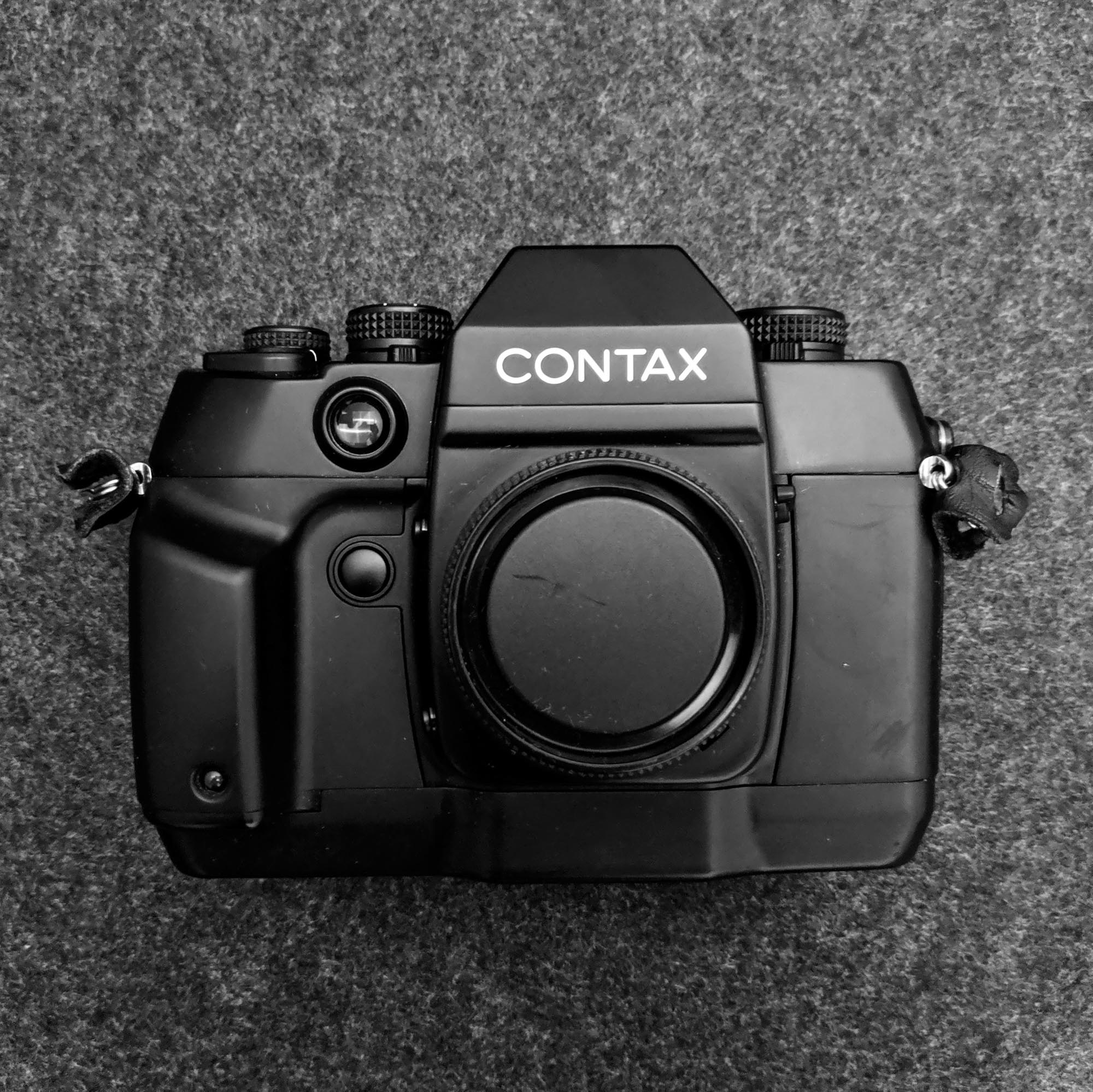
The CONTAX AX is probably the nearly unnecessarily innovative flick camera of the 1990s and traces its chequered lineage dorsum to the early on a prototype photographic camera shown at 1980's Photokina.
Produced from 1996 until ~2005 when the Contax brand was officially shuttered, the Contax AX has a unique trick upwards its sleeve: it turns any manual focus lens that tin be attached or adjusted to its Contax/Yashica (C/Y) mountain into an autofocus lens. The fob? A moving film plane, or equally Contax'due south designers put it, a "camera within a photographic camera". The internet event is a chubby, heavy only surprisingly useable 35mm film SLR.
If it'southward so skillful, why requite it the "obscure" spot?
The camera was an also-ran in the autofocus SLR race. Nikon and Canon were already beating its AF performance with their previous-gen cameras and it was introduced to the marketplace at over $800 more (in today'due south money) than the considerately superior Nikon F5, which was released in the same yr.
The Contax sold but non exceptionally well, every bit evidenced by the number of utterly amazing examples now on the secondhand market. The AX still be had for a vocal and it's well, well worth it. Bodies in excellent status regularly sell for United states$200 and mint examples can be had for sub-US$500. If you're interested in learning more nearly this curious technological folly, caput on over to my all-encompassing CONTAX AX review.
The near poorly designed picture show camera of the 1990s: Konica AiBORG
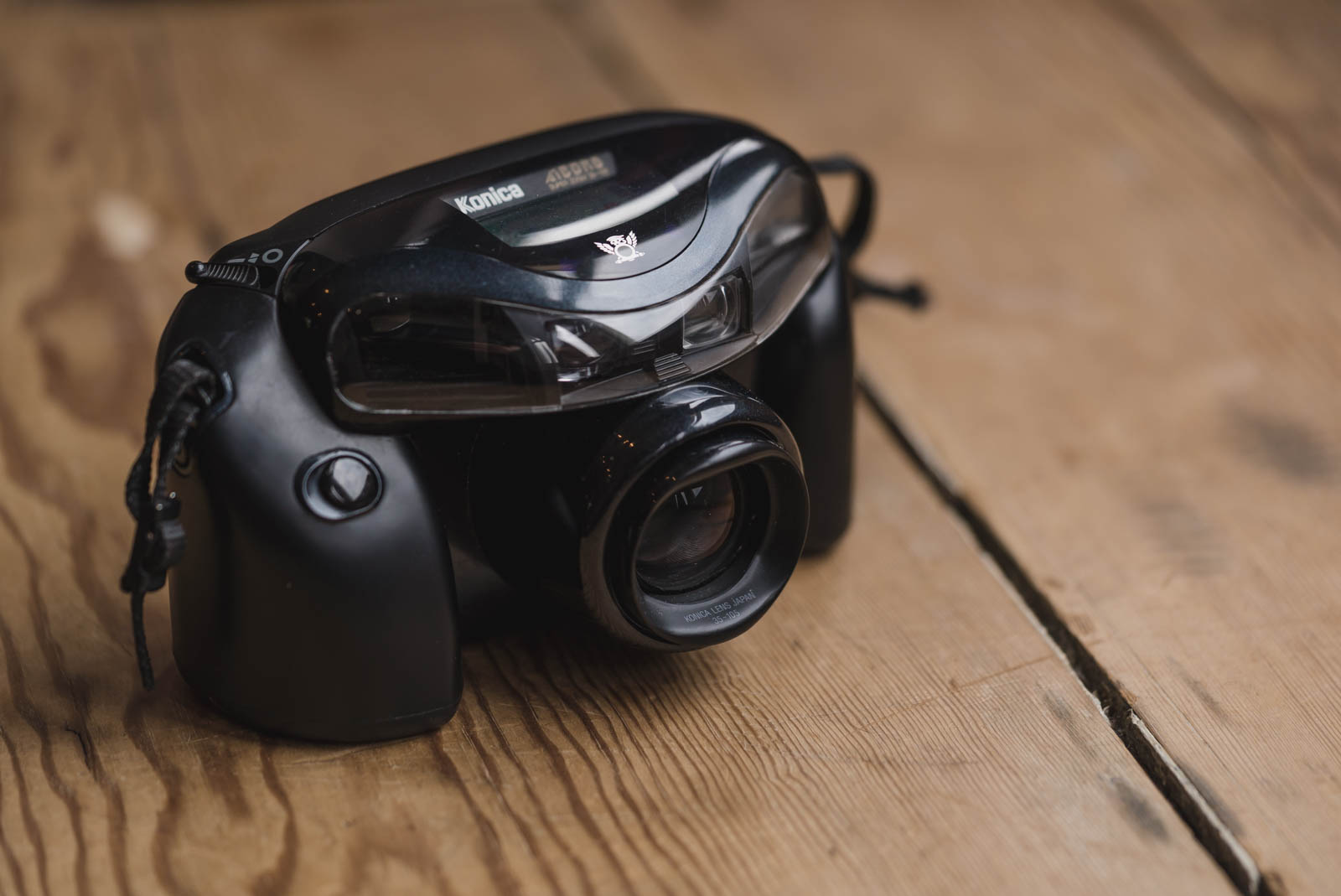
Just a handful of people know for certain if the proper name "AiBORG" was the consequence of a dark of heavy drinking at a back street Tokyo Izakaya or if the marketing team were only fans of Star Trek: The Adjacent Generation. What is known, nonetheless, is that (to me) the AiBORG has to be the most poorly designed camera of the 1990s.
Released in November 1991 at a whopping retail price of United states of america$510 (nearly Usa$ane,000 in 2020 money), Konica wanted the AiBORG to exist big, really Large. And so big in fact, that the rented out the Meadowlands Stadium (now home to the MetLife Stadium) in New Bailiwick of jersey just to announce it. I'm guessing that wasn't cheap.
Konica went on and on and on about its amazing features, how it made everything that petty flake easier and how amazing the "futuristic, blackness, ellipsoidal" design was. In reality, it was a hot mess closer to the lovechild of Nighttime Helmet and a Goomba than anything else.
I had the joy of owning ane for three days back in 2016, spurred on by Hamish Gill's review back in 2015. It was a fault. If you have iii hands and incredibly dextrous fingers, yous may well think that the AiBORG doesn't quite deserve this spot but for the other 100% of people out in that location, I've no dubiousness it does.
The almost well-designed picture show photographic camera of the 1990s: Nikon 28Ti and 35Ti

Seen from the front, the Nikon 28Ti and 35Ti give the appearance of refined, if slightly bland compact 35mm cameras. Concur them and things start to change. They're light just feel solid in the hand, the titanium skin feels good to the bear on and the leatherette provides a decent corporeality of grip for a design that is essentially a pocket-sized brick.
You glance at the peak plate and information technology's then that you lot find the dials. Oh my God, the dials. It's all about those dials. Here's a quick video from Sandeep:
The video shows:
- Focus in P style (Machine-Program) – left punch.
- A mode (Aperture Priority) aperture aligning – right punch.
- Exposure compensation – lesser middle punch.
- AF override (manual focus) – left dial
The focus punch moves in steps between the numbered distance settings and their half positions. Notation the panel on the left is lit red. The camera was recorded with no film loaded. The ruby-red low-cal ways that the camera is not able to fire the shutter.
The Nikon 28Ti and 35Ti are among the well-nigh avant-garde 35mm compact cameras ever made, released in 1994 and 1993 respectively. They were designed to last and built with uncompromised performance in mind – according to Nikon;south marketing materials. Built effectually almost flawless Nikkor lenses the cameras includes programmed machine and aperture-priority shooting modes, a born panoramic mode, custom functions and Nikon's advanced 3D Matrix metering (previously express to Nikon's AF SLRs).
The dials, which were designed to resemble those on a fine chronometer show a multitude of relevant data: aperture, focus distance, exposure compensation, long exposure counter, battery status, film counter and much more. Nikon could have taken the easy road and just added an LCD to show all of this but they didn't, they went the actress mile and the result is both cute and easy to read. It's the kind of display that you lot only need a fraction of a second to read at a glance one time you go accustomed to it – merely like the chronometers that inspired information technology.
The 35Ti and 28Ti have both retained their prices over the years with improve consistency than almost other premium compacts. Approximately U.s.a.$1200 when make new (~Usa$2100 in 2020), the 35Ti withal commands at least US$600 for a camera in skilful status, with mint examples regularly reaching US$1000. The 28Ti demands much college prices only if you're patient, deals can be had.
Thanks to Sandeep Sumal and Counterpart Wonderland for the photos. You can observe more about the Nikon 35Ti in this review from Ray Rapkerg and both the 28Ti and 35Ti over at MIR.
The most ubiquitous film camera of the 1990s: the 35mm compact camera
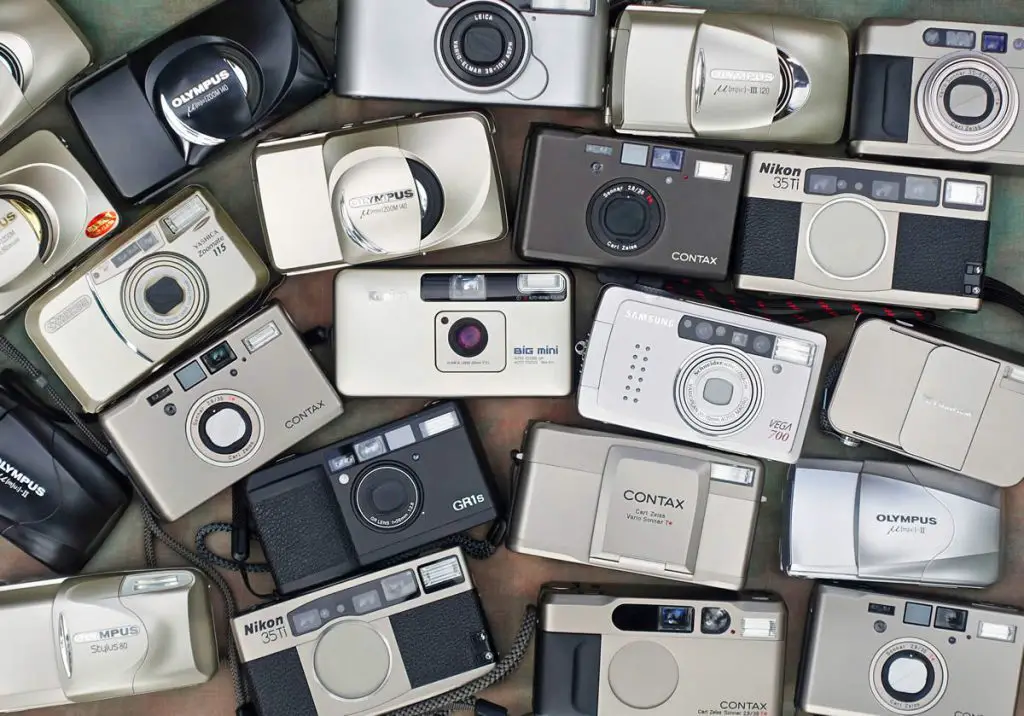
This "award" should really go to a single camera but information technology would exist unfair to unmarried just i out because the huge range and variation of functions, quality and of course, toll. So, that leads me to crown ALL 35mm meaty cameras equally the kings and queens of the almost ubiquitous film camera of the 1990s.
It felt similar absolutely everyone had 1, from cheap and nasty "free focus" Practicas, to Vivitar Broad and Slims, the Olympus MJU, the Ricoh GR1/s/5 and the Contax T2. My personal favourite has to be the GR1 serial, peculiarly the GR1s and GR1v but that'southward but me. There are SO MANY in betwixt and it's almost impossible to single i out. Unless someone reading this has units sold information for me, they're all getting a nod.
Ray Rapkerg put together an extensive test of 12+ 35mm compact cameras hither on EMULSIVE but a little while back. If y'all're looking to learn more about them and how they perform in real life, head on over.
The best 35mm SLR of the 1990s: Nikon F100

This is where things are going to get a piddling divisive. As a self-proclaimed Nikon fanboy, you lot might expect information technology to be a Nikon…and well, you'd be right. It'south the Nikon F100 but behave with me for a second and I'll explain why.
The 1999 Nikon F100 was the pinnacle of prosumer SLR pic cameras – not merely those made by Nikon, all of them. It was to the 1996 Nikon F5 what the 1994 Nikon F90X/N90S was to the F4. The F100 represents everything Nikon knew about making cameras at that fourth dimension and although used as a redundancy body from new past a few pro photographers I know, the camera has gone on to be recognised for what it actually is: the all-time Nikon photographic camera for nigh any believable awarding other than the F6. Controversial I know only how many times have y'all seriously used interchangeable viewfinders on your camera in the field? Be honest at present.
Options included battery choices plus bombardment grip, remote shutter release, finder accessories, interchangeable screens, the ability to utilize Nikon lenses from as far back as 1977 every bit well as nigh Nikon lenses made today, a databack…the list goes on. Sure, it's not equally "pro" as the F5 only information technology does the same job for about 60% of the weight and is only 30 grams heavier than its predecessor.
Price-wise, it was a moderately expensive camera at the time, some US$2,100 converted for today's money. Body only deals today range from US$150 to US$400 depending on which office of the earth you alive in and if y'all're on the fence and tin can option one up for cheap, I strongly recommend it as an introduction to the Nikon lens system.
There's more on the F100 over with Shoot Film Co'south Mike Padua in this video review. Check it out!
The best 35mm rangefinder of the 1990s: Contax Chiliad series
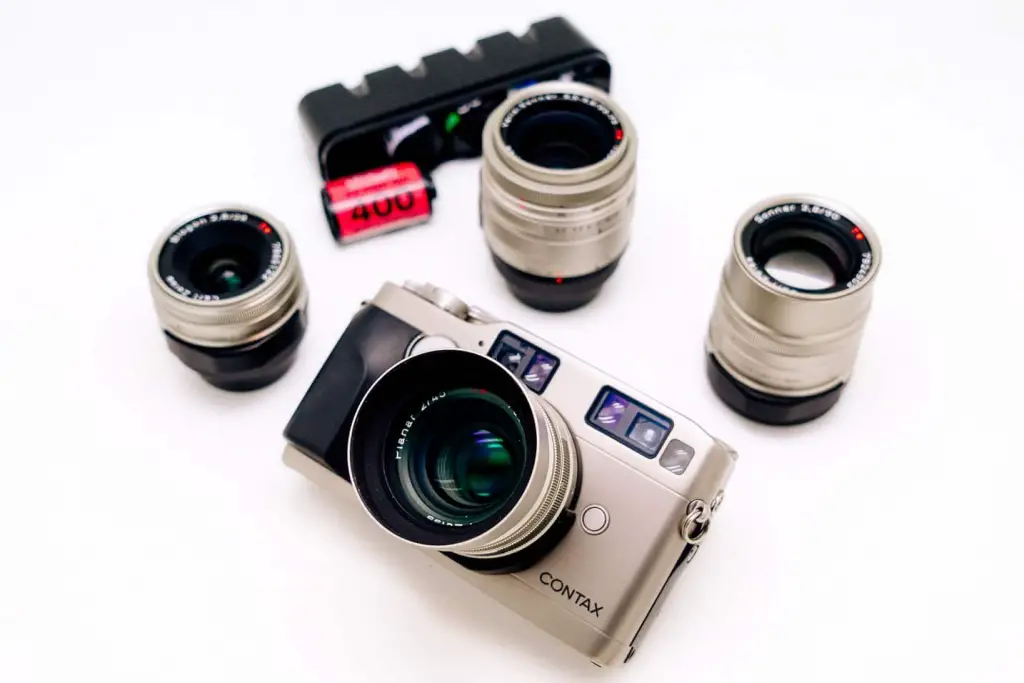
I hateful it has to be, correct? Released two years apart, 1994 for the G1 and 1996 for the G2, these cameras were the pinnacle of autofocus 35mm film rangefinders. Yes, the Leica Ms are "better" for some people merely come on: AUTOFOCUS and a variable magnification viewfinder that goes wider and longer than whatsoever Leica e'er fabricated.
The Contax G1 took a lot of flack for its slow and occasionally unreliable AF system. Given that manual focus with this camera is non-standard, I tin sympathise how information technology might accept irked some people but I've never actually had an effect with it – although the same "dial" approach does frustrate the living daylights out of me on the original mechanical Contax rangefinders.
Yous might be interested in...
When 1996'due south Contax G2 came out, customers had only two questions:
- Why didn't you simply release this beginning and exist done with it?
- Is the AF stock-still?
Yeah, literally only two questions. Oh, perhaps as well i well-nigh the new 21mm f/ii.viii Biogon and if it could be used with the G1 (the respond is non without modification but if you get a "green label" G1, it will).
While I can't say the first question was answered satisfactorily, the second nearly certainly was. AF on the G2 was faster, more than accurate and suffered less from back/front end focus than the G1. That'south not to say the G1 is a dud buy. It's a perfectly wonderful photographic camera in real-use but the call of the G2 – especially the black finish – is strong. Further reading over on Japan Camera Hunter.
The best medium format SLR of the 1990s: Contax 645
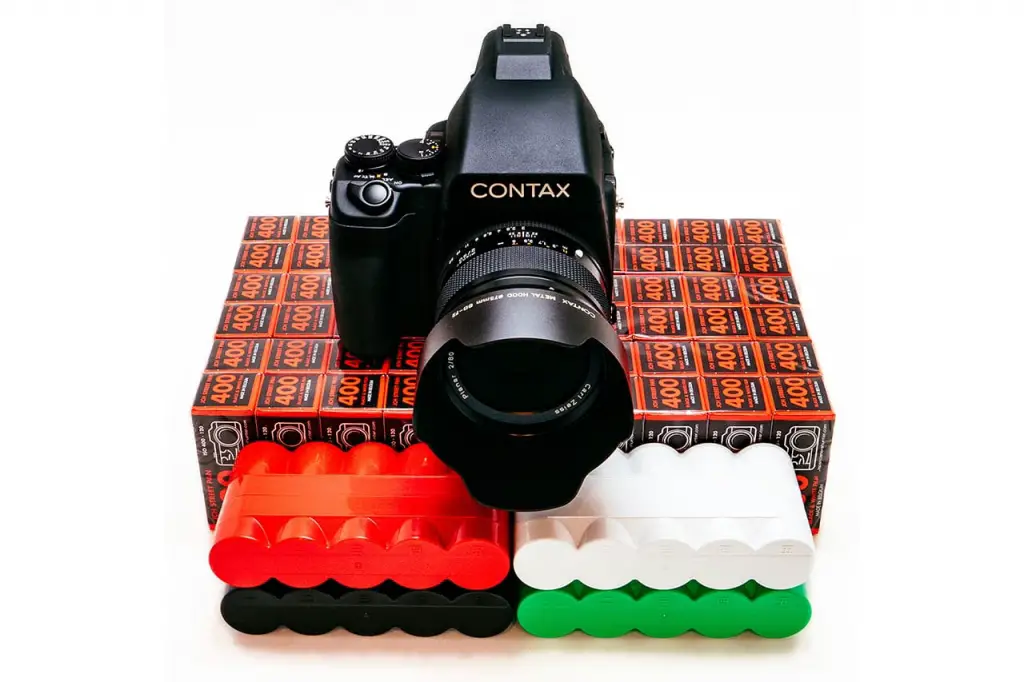
You're expecting me to say "Hasselblad", aren't you? I honestly wish I could merely it's impossible to do so in good conscience. This particular title HAS to become to the mighty Contax 645. Given that this is the third CONTAX placing in this list, you might be forgiven for thinking this article is some kind of Contax love-in but I didn't plan for it to plow out this way, I'g merely writing each section as it comes and to be fair, Contax was on its game in the 1990s…for the almost office.
Back to the Contax 645 and what tin can I say? It'southward a truly amazing slice of kit. Hands downwards probably the best autofocus medium format film SLR ever fabricated. The Contax 645 (released in 1999), nearly has it all: autofocus, autoexposure, aperture priority, motorcar current of air-on, a max ane/4000 second shutter speed, interchangeable picture backs and of course: Zeiss lenses.
Honestly, I'm surprised that Hasselblad didn't become there commencement – it took them another three years to bring their version to market in the form of the H1 aka Fuji GX645 simply that particular story is best left for the 2000s event of this serial.
The Contax 645's bragging rights today come from its use by many, many famous photographers – and a glut of wedding photographers – of the late 90s and early on 2000s including Jose Villa and Greg Finck.
At that place's farther reading to be has over with Bellamy on Japan Camera Hunter.
The best medium format rangefinder of the 1990s: Mamiya 6 MF
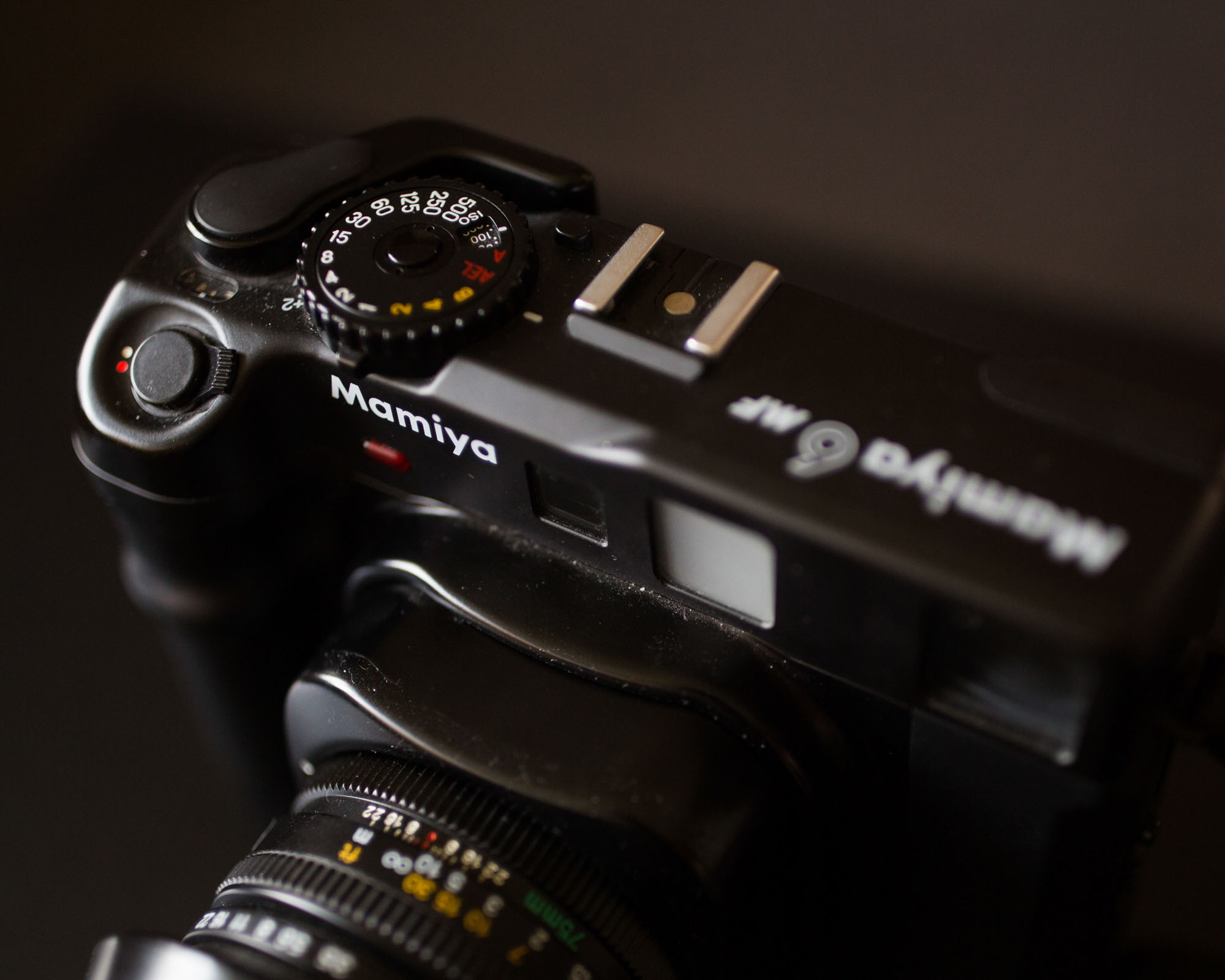
Who would take idea that new medium format rangefinder movie cameras would exist so prevalent in the 1990s? there were SO MANY CHOICES including numerous valiant attempts by Fujifilm with their GA645 series and other variants.
Thinking about it, it makes sense. The excesses of the 1980s had given mode to a general rise in salaries and dispensable income across the globe, international travel became accessible to more people and travel cameras were most definitely in faddy.
Some of these cameras – like the updated Fuji GW series and GSW670, 680 and 690s – were designed with tour groups and group photos in mind. Meaty but not exactly discrete. Others similar the Mamiya 6 MF, were designed to be light, meaty travel companions. Over again, this is a subjective opinion and no doubt some of you are screaming at your screens that the camera hither should exist the Mamiya 7 or Mamiya 7II which, off-white enough, was a contender but the choosy need for external finders just to use its newer wider-bending lenses simply seemed a bit off to me.
The Mamiya 6 MF has 3 lens options – all of which collapse into the torso – and they're really all you need:
- Mamiya half dozen G 50mm f/4 L (appx 25mm equivalent on full-frame 35mm film)
- Mamiya vi G 75mm f/3.5 L (appx 45mm equivalent on full-frame 35mm film)
- Mamiya half-dozen G 150mm f/four.5L (appx 90mm equivalent on total-frame 35mm film)
Sure, a wider choice would have been nice but equally a travel kit, it'due south near-on everything y'all need for most environments and situations. Not convinced, Charlie Tadlock wrote an fantabulous review of the camera, forth with his thoughts on why he believes the Mamiya 6 MF is the all-time medium format camera ever made. Get out the pitchforks.
The best "things-yet-to-come" camera of the 1990s: Sony DSC-F505
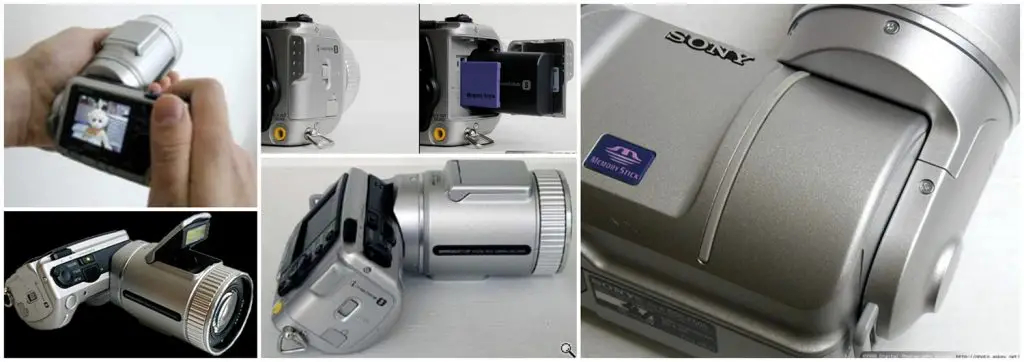
Wait, I know EMULSIVE is dedicated to pic and traditional photography but I'd take to exist an idiot to discount digital cameras. To clarify, I don't. There's no escaping the fact that digital photography in all its forms has been responsible for one of the greatest democratisations of technology in all man history – probably save for the invention of writing and universal education but I'm getting ahead of myself.
Many manufacturers tried their hands at digital photography in the 1990s, a few of them were dipping their toes into photography for the very start time – hello Nintendo, Apple and Sony – but Canon, Nikon, Fuji, Kodak and other names had been developing technologies for years – in some cases since the late 1970s – then it's reasonable to await something like 1991'due south Kodak DCS 100 or 1999's Nikon D1. Right? Incorrect. It's this Sony.
Sony had been playing with digital photography since the 1980s with cameras like the Mavica MVC-C1 merely it was 1999's 2.1MP DSC-F505 that put digital photography into the easily of consumers with coin to burn.
The photographic camera was released at a flat US$yard – near US$1,500 in today's coin – but it was pretty much essential to buy a Sony MemoryStick as the included 4MB stick could only store 8 photos at the max 1600x1200px resolution. A 120MB stick would set you dorsum antoher~$550 in today's coin. Not inexpensive and a sign of the countless accessory upgrades to come up.
So why does this camera meet the criteria for "The all-time things-yet-to-come camera of the 1990s"? Well, I'thousand focused on Sony as a company. While traditional film camera companies would fight it out – some to the death – over the coming decade, Sony was out in that location happily cranking out model after model after model of consumer cameras, all the while, evolving and perfecting their digital sensor technology.
Everything inverse in 2006 when the company – though collaboration with and ultimately purchase of Konica Minolta – released its first SLR, the A100, then the A700 in 2007. In 2008 the company would release three DSLRs at the same fourth dimension, followed by a sixth camera in three years, the 24.6MP A900.
The new cameras were a hybrid of film and digital technology and in some means, y'all might say that the at present fully-captivated Minolta's futuristic aspirations from previous decades were function of the allure of these new digital pro/prosumer cameras – an AF SR that detects the photographic camera being brought to the eye and triggers AF hunting based on the position of the middle? Yes delight.
Equally of late 2019, Sony pulls in ~50% of the global revenue share for digital sensors (~70% for smartphones). That's more double its nearest competitor, Samsung. It's not an easy situation to find yourself in. Do the math and you realise that Sony'due south marketplace share for end-user products is nowhere near that, which ways they risk cannibalising their own product market place share by selling sensors to other manufacturers: Phase One, Fujifilm, even some Nikon some cameras use them.
And that's why this niggling Sony camera gets the spot. A small consumer camera with a Zeiss lens sitting at (nearly) the very beginning of their road to world domination in digital photography.
Check out the Sony DSC-F505 review from 1999 over on DPR (aye, 1999!) for more than.
The 1990s described in a unmarried film camera
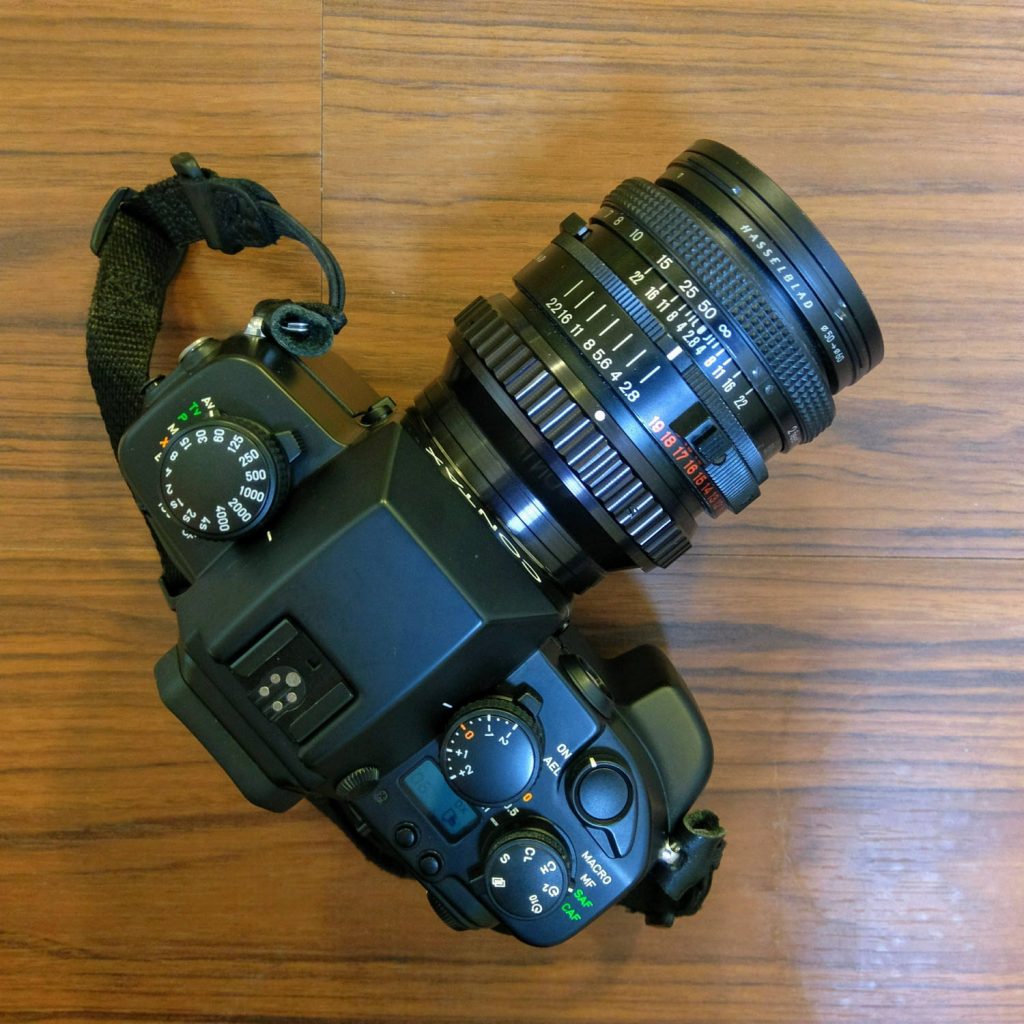
Ah, I dear it when things come full circumvolve. Again, this was not planned, I can't stress that enough. Here'due south how I got here:
The 1990s were a menstruation of rapid change. It seemed that the world couldn't throw off the weight of the 1980s fast enough. Social and political modify was itinerant across the globe: the autumn of the Iron Pall, David Hasselhoff singing on the Berlin Wall in 1990 and the end of the CCCP a year after. Things were BUSY.
We had teen idols pretending to exist bad boys, we were all the same reeling from the Milli Vanilli scandal and the cyberspace was about to get a thing. Anybody between the ages of 12 and thirty was watching Friends and and so there was Jurassic Park, The Large Lebowski, The Matrix, Fight Club, Terminator 2, Romeo and Juliet, Clerks, Casino, Titanic…the list goes on. Music was all over the place: Tupac, Mariah Carey, The Fugees, Weezer, a crazy Acrid/House/Rave scene in the UK, the bloody Spice Girls, Chemical Brothers, a NEW UK invasion, Biggie, Britney Spears and yes, Eminem. Seriously, I've barely scratched the surface only the takeaway is this: there was an explosion of genres and flavours in virtually every single field of human creative attempt.
As someone very much awake during the decade, I ofttimes struggle to rationalise the fact that the commencement of the decade was some 30 years ago now. I have wasted my life 😉
…and that'south where the Contax AX comes in.
Much like the decade that spawned information technology, the photographic camera was a hodge-podge of many different, potentially incompatible things slapped together that – unfortunately – merely didn't quite piece of work every bit far every bit cameras went. I love mine and I savor using it but I'm happy that I paid depression three figures vs the original listing price.
Looking at the photographic camera now and thinking nigh what it represents just makes me recall of the 90s – it'south over-engineered, over-designed, overly heavy and overly endearing. It might non take been the camera I would accept picked upwards or even wanted back so but it's certainly got a very welcome spot in my drove today.
Similar those of my clan – the last of Gen 10 – who went from children to adults during that decade, the Contax AX doesn't really know what information technology'south supposed to be. It'southward got a list, it knows it can do stuff and it'due south looking effectually for help but adulting is difficult and it doesn't really know if it wants to do this, that or just nothing at all. It'south pretty chill and quite happy to watch all the cameras that came before and after it get into fights while it has a beer and wonders what happened to that Tamagochi information technology had in high school.
Merely do me a favour, just don't telephone call information technology a boomer.
And in that location you have it, my have on a "all-time camera" list. It'south not perfect merely none are, to be fair. I'll be covering more than decades over the coming months and if you take any preferences on which i I should tackle adjacent, please let me know in the comments below. If there's a specific category or type you're after my take on, delight also let me know in the comments below.
I promise y'all've enjoyed this little interlude. Thanks for reading and I'll run into you in a bit.
~ EM
Share your cognition, story or project
The transfer of noesis across the moving picture photography customs is the heart of EMULSIVE. You lot can add your support by contributing your thoughts, work, experiences and ideas to inspire the hundreds of thousands of people who read these pages each month. Bank check out the submission guide here.
If you lot like what you're reading you can also aid this passion project by heading over to the EMULSIVE Patreon page and contributing equally picayune every bit a dollar a month. There'due south as well print and wearing apparel over at Lodge six, currently showcasing over two dozen t-shirt designs and over a dozen unique photographs available for buy.
Source: https://emulsive.org/featured/the-best-and-worst-film-cameras-of-the-1990s
Posted by: zurcherpudge1936.blogspot.com

0 Response to "What Camera Did They Use To Film Belly 1998"
Post a Comment